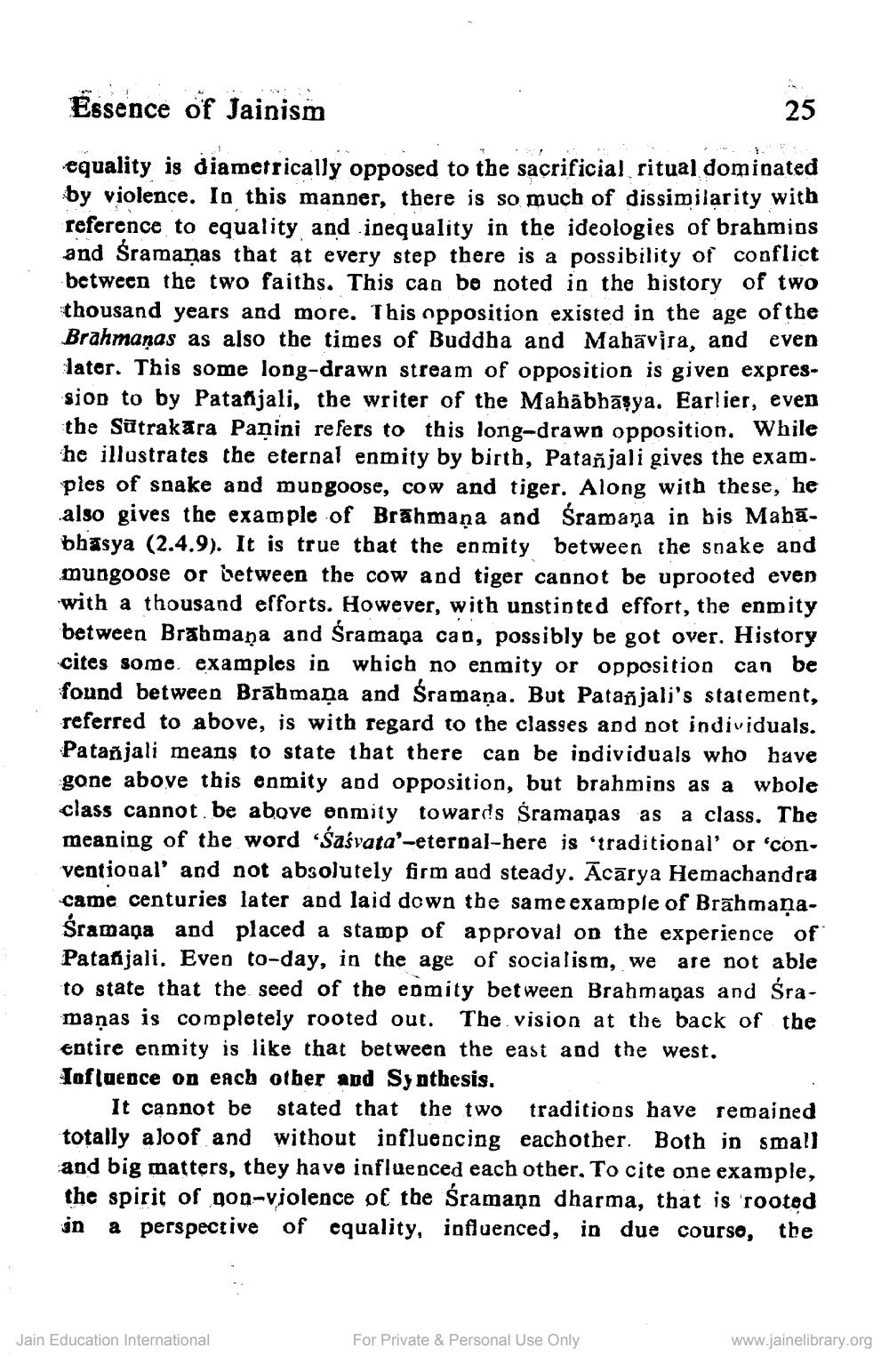________________
Essence of Jainism
25
equality is diametrically opposed to the sacrificial ritual dominated by violence. In this manner, there is so much of dissimilarity with reference to equality and inequality in the ideologies of brahmios and Sramanas that at every step there is a possibility of conflict between the two faiths. This can be noted in the history of two thousand years and more. This opposition existed in the age of the Brahmaņas as also the times of Buddha and Mahavira, and even later. This some long-drawn stream of opposition is given expression to by Patanjali, the writer of the Mahābhāşya. Earlier, even the Sūtrakāra Panini refers to this long-drawn opposition. While he illustrates the eternal enmity by birth, Patañjali gives the exam. ples of snake and mungoose, cow and tiger. Along with these, he also gives the example of Brāhmaṇa and śramana in bis Mahabhasya (2.4.9). It is true that the enmity between the snake and mungoose or between the cow and tiger cannot be uprooted even with a thousand efforts. However, with unstinted effort, the enmity between Brahmaņa and śramapa can, possibly be got over. History cites some examples in which no enmity or opposition can be found between Brāhmaṇa and Sramaņa. But Patanjali's statement, referred to above, is with regard to the classes and not individuals. Patanjali means to state that there can be individuals who have gone above this enmity and opposition, but brahmins as a whole class cannot be above enmity towards Śramaņas as a class. The meaning of the word “Śaśvata'-eteroal-here is 'traditional' or 'con. ventional and not absolutely firm and steady. Ācārya Hemachandra came centuries later and laid down the same example of BrāhmaṇaSranana and placed a stamp of approval on the experience of Patanjali. Even to-day, in the age of socialism, we are not able to state that the seed of the enmity between Brahmanas and Sramaņas is completely rooted out. The vision at the back of the entire enmity is like that between the east and the west. Iofluence on each other apd Synthesis.
It cannot be stated that the two traditions have remained totally aloof and without influencing eachother. Both in smal) and big matters, they have influenced each other, To cite one example, the spirit of non-violence of the Sramann dharma, that is rooted jn a perspective of equality, influenced, in due course, the
Jain Education International
For Private & Personal Use Only
www.jainelibrary.org




